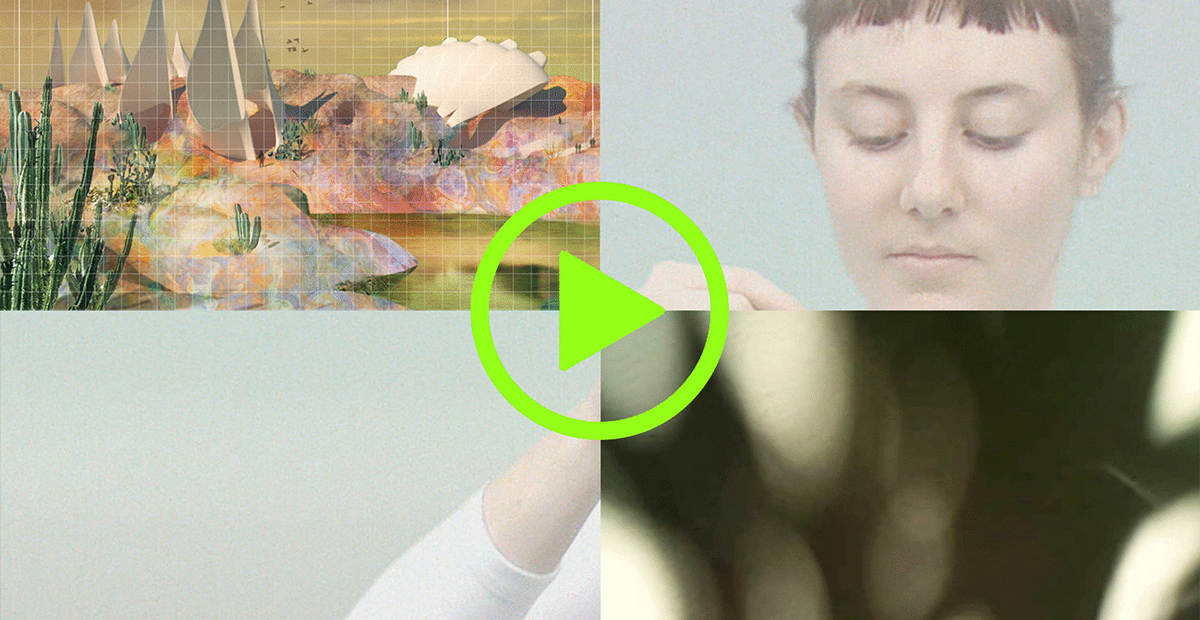Ecological Disturbances: Slowing Down, Reflecting and Re-imagining
Participants
Partenaire·s

Presented by Groupe Intervention Vidéo as part of the HTMlles Festival
Ecological Disturbances: Slowing Down, Reflecting and Re-imagining
With Vjosana Shkurti, Sierra Druley + Jean Ni, lamathilde, Anna Eyler + Nicolas Lapointe, Charline Dally
Video screening
Visible here from November 6 to December 2
Curator: Verónica Sedano Alvarez
The central line of argument in Ecological Disturbances: Slowing Down, Reflecting and Re-imagining, is the paradigm shift; whether through ritual gestures that transform scale and atmosphere; artificial or human voices describing alternative futures and the relationship of world to language; or archaeological scenes of a fossilized digital era. This video program presents five works exploring the environmental crisis of the Anthropocene through ritualistic performance, linguistic reflection, and the construction of fictional, alternative, and future realities.
In resistence to the acceleration that characterizes the present, the cadence of this program, which blends temporalities and emphasizes eco-feminist thinking, is restful. “Why should our bodies end at the skin […]?” writes Donna J. Haraway in her book A Cyborg Manifesto. Indeed, the porosity of a body and its blurred limits is inevitable in a future where the human/non-human dichotomy has been dismantled, giving way instead to the “digestive approach” (Troubling Ecologies). In some of the speculative scenarios offered in these works damage and loss are more apparent. In one, through a meditative and symbolic quest in which the essence of being and of the world merge (Reflecting the Source) and in another, through an archaeological landscape that exposes the traces/refuse of the digital age (La Fable d’Oxa 21965). However, the present is also calling us. Artificial light (a candle and a light bulb) and melting wax (Hello Earth), as well as narratives of a cyclical nature where the word “destroy” becomes a kind of leitmotif (Having and Being), uncover the complex dynamics within the triad that is domination-possession-destruction.
[1] Donna J. Haraway, A Cyborg Manifesto. Science, Technology, and Socialist-Feminism in the late Twentieth Century, University of Minnesota Press, 2016, p. 61.
Hello Earth, Vjosana Shkurti
Hello Earth is a three-way conversation between the artist, a candle and a lightbulb on a dimmer, in a personal attempt to go back in time through interactions of light. At times, electrical light weighs upon our eyes with its tyrannical demand for attention. But when the power is out, we experience a freedom that lets us return to simpler and gentler ways of illumination. This return, though nurturing and devoid of excess, is only temporary. We are eventually forced to accept the irreversibility of technological complexity we have created.
Musique: Contact from the ice par Marc-André Cossette
Troubling Ecologies, Sierra Druley + Jean Ni
Troubling Ecologies is a network of bio-technological stories transmitted from a near-future terrain in the Pacific Garbage Vortex. In the amorphous islands of the P.G.V., clustered cyborg ecologies emerge as bodies digest and re-configure the refuse of white supremacist capitalist patriarchy. Here, the boundaries between self and other, human and animal, biological and technological, fiction and reality, are blurred.
Using a combination of video and physical artifacts, Troubling Ecologies builds an uncanny alternate reality that asks: How would the ways that we make things, govern, and inhabit the world change if we understood ourselves as always already surrounded by powerful and subtle networks of agents, rather than an inert collection of matter? The project seeks to model feminist concepts in the medium of landscape architectural fiction, producing an immersive, inhabitable dream space that concentrates patterns and systems that are already working to subvert oppressive ideologies.
Avoir et être, lamathilde
To have, to be, or to be with.
Replace TO HAVE with TO BE.
Parable of the domination relationships that intrude everywhere, that infiltrate the frameworks through which we see the world.
The verbs to be and to have don’t exist in all languages, they produce our relationship to the world, to others and to nature.
Relations between possessor and possessed, oppressor and oppressed.
Human relationship to the planet, sex, gender, race, class.
Visual and linguistic exploration, poetic-critical look at our relationship to the world.
What about being a feminist queer being in neoliberalism and what about the planet?
Do I own it or do I belong to it?
La Fable d’OxA 21965, Anna Eyler + Nicolas Lapointe
La Fable d’OxA 21965 considers material culture within the context of deep time. Evoking at once an architectural frieze and an archaeological timeline, this looping video work surveys a computer-generated virtual landscape comprised of 3D scanned artifacts and architecture from the Girona province. Featuring sites with a rich, cultural significance—from the Coves Prehistòriques de Serinyà to the Cathedral of Saint Mary of Girona—the video stitches together these 3D models into a palimpsest of human-geological relations. This environment is also populated with some of the less romantic signifiers of our geological legacy: trash. Fossilized water bottles, cell phones, and selfie sticks pepper the landscape, complicating our relationship to the earth and its resources. Reflecting on the immense ecological pressures of tourism specifically (and contemporary life, more broadly), La Fable d’OxA 21965 imagines future fossils of the digital age, and places them on equal footing with the architectural wonders of civilizations past.
Réfléchir la source, Charline Dally
Réfléchir la source is at the confluence of science fiction, poetic reverie, and ecofeminist thinking. This video piece is an invitation to slowness as an act of resistance to the hyperactivity of the world. It is inspired by reflections that outline new ontologies of the world as a shared sensibility, in which empathy acts as a unifying force. The work depicts a future where water, made scarce by a hypertrophied Anthropocene context, gives way to the arid desert that continues to expand. There follows a polysemic quest in search of a source that is difficult to identify.